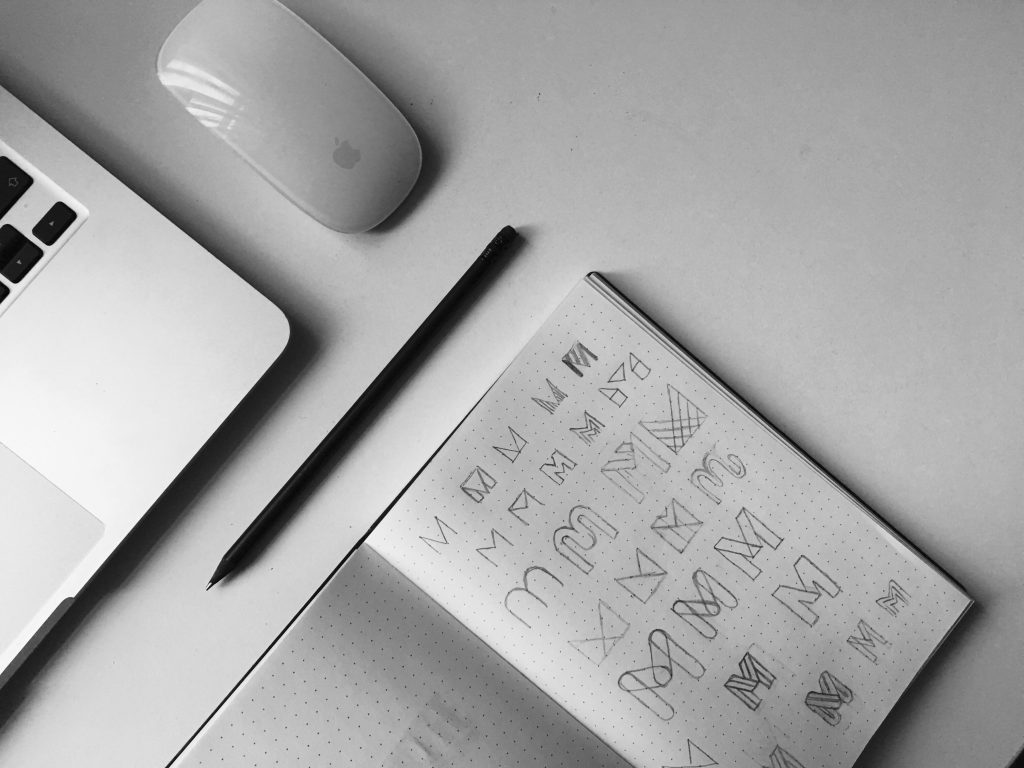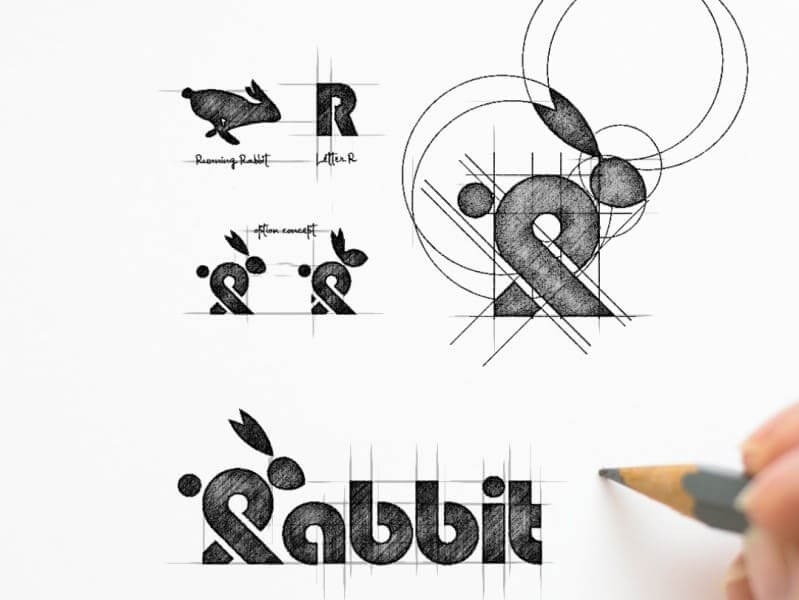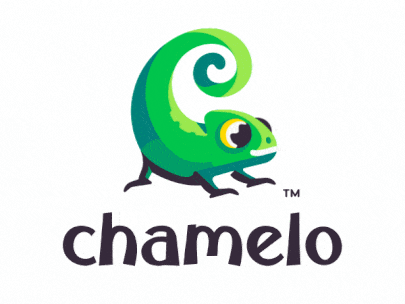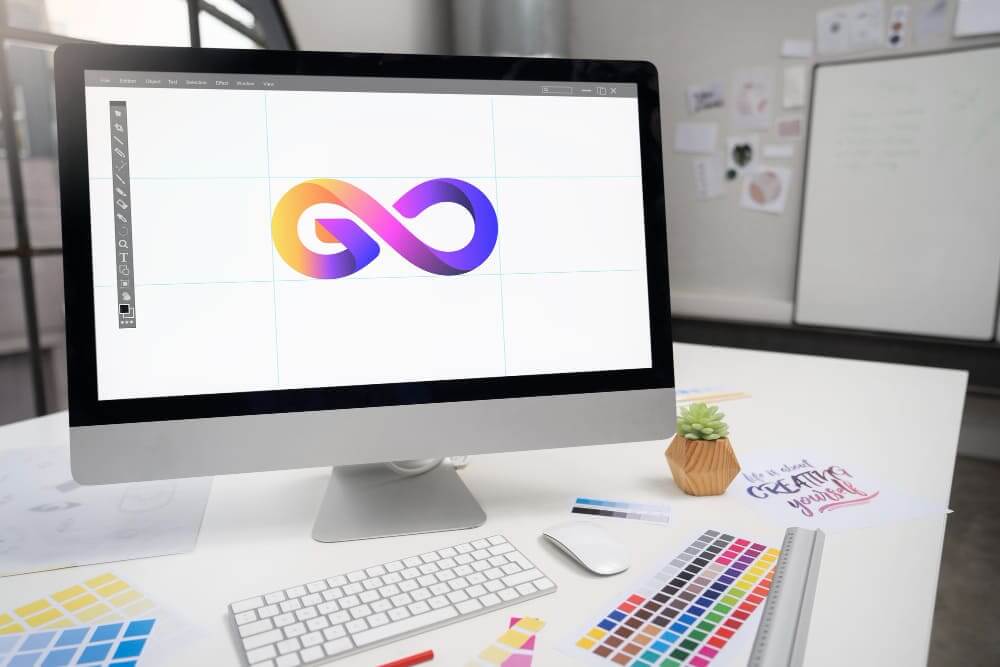Working in the field of logo design and brand identity, and staying ahead in this industry is crucial as a professional logo and brand identity designer. Let’s take a look at The Future of Logo Design: Trends to Watch in 2025.
As we look further into the year of 2025, the landscape of logo design is shifting in fascinating and unexpected ways.
From the resurgence of retro aesthetics to the cutting-edge integration of artificial intelligence, the future of logo design and branding is a spectacle of innovation.
Let’s take a look a look at some of the most captivating logo design trends that are going to define the visual language of brands in the New Year.
Table of Contents
The Renaissance of Minimalism: Less Is More, Again

Just when we thought minimalism in logo design had reached its peak, it’s going to be a main area logo designer’s focus on – but with a twist. The minimalist logo design trend of 2025 isn’t just about stripping away excess; it’s about finding the perfect balance between simplicity and distinctive character.
Brands are increasingly recognising the true power of clean, uncluttered logos in a world saturated with visual noise. These modern logo trends aren’t just aesthetically pleasing; they’re highly functional in a market dominated by visual noise. Responsive logo design is no longer optional – it’s imperative. Logos must maintain their integrity across multiple platforms, from tiny smartwatch screens to towering billboards.
But don’t mistake this minimalism for blandness. Today’s minimalist logos are anything but boring. Logo designers are playing with negative space, creating clever dual-imagery logos that reward the viewer for a second look. It’s a game of visual wit, where less truly becomes more.
Gradients: The Comeback Kid of Colour

Remember when flat design reigned supreme and gradients were consigned to the dustbin of graphic design history? Well, dust off those colour transitions because gradient logos will come back with a vengeance. But these aren’t your grandparent’s gradients – oh no.
The gradient logos of 2025 will be bolder, more vibrant, and unapologetically eye-catching. They’re leveraging colour psychology in branding to evoke specific emotions and associations. We’re seeing a surge in logos that transition from warm to cool tones, creating a sense of depth and movement that flat designs simply can’t match.
What’s driving this colour trend? In part, it’s a reaction to the sea of sameness that flat design inadvertently created. Brands are craving ways to stand out, and well-executed gradients offer a path to distinction. Plus, advancements in display technology mean that these subtle colour transitions look stunning on high-resolution screens.
Typography Takes Centre Stage

In 2025, we will witness a return in typography-focused logos. Brands are realising that sometimes, the most powerful visual statement is the word itself. But these aren’t just any fonts slapped onto the canvas. We’re talking about custom, hand-crafted typefaces that are works of art in their own right.
Typography-centric logos are particularly prevalent among brands that want to convey sophistication, trustworthiness, or a sense of heritage. By carefully manipulating letter forms, logo designers are creating logos that are not just read, but experienced.
The trend extends beyond traditional serif and sans-serif typefaces. We’re seeing an explosion of experimental typography, with letters that morph, interlock, and play with negative space. It’s a typographic playground where the rules are meant to be broken into a thousand peices.
The Rise of Adaptive Logos

In an age where a brand might be encountered on anything from a smartwatch to a stadium jumbotron, the concept of a single, static logo is becoming outdated. Enter the era of adaptive logos – shape-shifting brand identities that respond to their context.
This logo design trend is about more than just scaling a logo up or down. Adaptive logos change their complexity, colour, and even their fundamental shapes depending on where they appear. A brand might have a detailed logo for large-format printing, a simplified version for app icons, and an ultra-minimal version for favicon use.
This approach to logo design isn’t just clever – it’s necessary. As brands expand their digital footprints, they need visual identities that are as flexible as they are recognisable. It’s a delicate balancing act between consistency and adaptability, and it’s separating the good logo designers from the great ones.
3D and Faux-3D: Adding Depth to Design

As display technology advances, so too does our ability to create and render complex 3D designs. In 2025, we will see a surge in logos that leverage 3D effects to create a sense of physicality in digital spaces.
But it’s not just about photorealistic 3D renderings. Logo designers are also playing with faux-3D effects, creating the illusion of depth through clever use of shading, perspective, and layering. These logos have a tactile quality that makes you want to reach out and touch them, even when they’re on a screen.
The 3D logo trend is particularly popular among tech companies and start-ups looking to convey innovation and forward-thinking. But we’re also seeing more traditional industries adopt this style to freshen up their image and appeal to younger demographics.
Animated Logos: Bringing Brands to Life

Static logos? That’s so last decade. In 2025, logos will come to life through animation. From subtle movements to full-blown mini-narratives, animated logos are capturing attention in a world where every pixel fights for eyeballs.
This trend is particularly powerful in digital spaces where motion is possible – websites, social media, digital advertising. A well-executed animated logo can tell a brand’s story in seconds, creating an emotional connection that static images struggle to match.
But here’s the clever part: these animated logos are designed to work just as well when static. The animation adds an extra layer of engagement, but the core design holds up on its own. It’s a best-of-both-worlds approach that’s proving irresistible to forward-thinking brands.
AI-Generated Logos: The Controversial Frontier

No discussion of future logo design trends would be complete without mentioning the elephant in the room: AI-generated logos. As artificial intelligence continues to advance at a breakneck pace, we’re seeing the emergence of tools that can create serviceable logos with minimal human input.
This trend is divisive, to say the least. On one hand, it democratises logo design, making it accessible to start-ups and small businesses that might not have the budget for a professional logo designer. On the other hand, it raises questions about the role of human creativity and the value of logo design expertise.
In 2025, we’re not going to see AI replace human designers – far from it. Instead, we’re seeing a hybrid approach where AI tools are used to generate initial concepts or handle tedious tasks, freeing up human logo designers to focus on refinement and strategic thinking.
Sustainable Branding: Logos with a Conscience

As environmental concerns continue to dominate global discourse, we’re seeing a shift towards sustainable branding – and this extends to logo design. In 2025, logos aren’t just visual identifiers; they’re statements of a brand’s values.
This trend manifests in several ways. Some brands are opting for logos that visually represent their commitment to sustainability – think leaf motifs, earth tones, and circular designs that evoke the concept of recycling. Others are taking a more subtle approach, choosing production methods and materials for their physical logos that minimise environmental impact.
But it’s not just about looking green. The most forward-thinking brands are considering the entire lifecycle of their logo, from digital rendering to physical application and eventual disposal. It’s a holistic approach to logo design that reflects a growing awareness of corporate responsibility.
The Return of Retro

Retro Collection by Kostya Petrenko
In a delightful twist of irony, one of the biggest trends in future logo design is… the past. We’re seeing a significant resurgence of retro and vintage-inspired logos, particularly styles from the 70s and 80s.
This trend is driven in part by nostalgia, particularly among millennials and Gen X consumers who hold decision-making power in many companies. But it’s more than just a trip down memory lane. These retro-inspired logos are being reimagined for the digital age, with cleaner lines and more versatile applications than their historical counterparts.
The retro trend is particularly prevalent in the food and beverage industry, where it evokes a sense of authenticity and tradition. But we’re also seeing tech companies adopt retro-futuristic logos that blend old-school cool with cutting-edge innovation.
Conclusion: The Future is Fluid
As we look to the future of logo design in 2025 and beyond, one thing is clear: the only constant is change. The trends we’ve explored – from minimalism and gradients to AI-generation and sustainability – aren’t mutually exclusive. The most successful logos of the future will likely combine elements from multiple trends, creating unique visual identities that are both timely and timeless.
The future of logo design isn’t about following trends blindly. It’s about understanding these emerging techniques and styles, and applying them thoughtfully to create logos that truly represent a brand’s essence. As technology evolves and consumer expectations shift, logo designers must remain agile, innovative, and deeply attuned to the cultural zeitgeist.
In this brave new world of branding, the logos that will truly stand out are those that not only catch the eye but also capture the heart. They’ll tell stories, evoke emotions, and create connections in ways we’re only beginning to imagine. The future of logo design is bright, colourful, and full of possibilities. Are you ready to make your mark?
Join The Logo Community
We hope you have enjoyed these Future logo design trends 2025. If you would like more personal tips, advice, insights, and access to our community threads and other goodies, join us in our community.
You can comment directly on posts, access our community threads, have a discussion and ask questions with our founder Andrew.
If you’re looking to learn more about brand strategy, we highly recommend eRESONAID with our friend and acclaimed brand strategist and author Fabian Geyrhalter, it’s packed full of knowledge and insights you will need to learn to become a brand strategist or apply what you learn within your own business.

FAQ: The Future of Logo Design in 2025
What are the top logo design trends for 2025?
The top logo design trends for 2025 will include minimalist designs, gradient colours, typography-focused logos, adaptive logos, 3D effects, animated logos, AI-generated designs, and sustainable branding elements.
How will AI and technology influence logo design in 2025?
AI and technology will revolutionise logo design in 2025 through AI-generated logos, advanced 3D rendering techniques, and the creation of adaptive logos that change based on their digital context.
Why is sustainable branding important in logo design for 2025?
Sustainable branding in logo design reflects growing environmental concerns. In 2025, logos incorporate eco-friendly elements, use sustainable production methods, and convey a brand’s commitment to environmental responsibility.
What is an adaptive logo and why will it be trending in 2025?
An adaptive logo changes its complexity, colour, or shape depending on where it appears. It’s trending in 2025 because it allows brands to maintain a consistent identity across various digital platforms and screen sizes.
How are animated logos changing branding in 2025?
Animated logos are bringing brands to life in digital spaces in 2025. They capture attention more effectively than static logos, tell brand stories quickly, and create stronger emotional connections with audiences.




